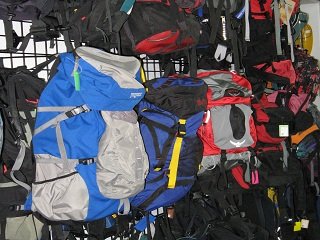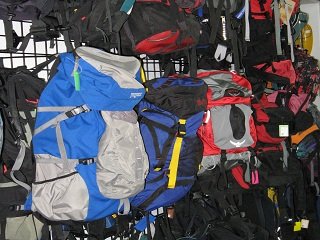 Whether you’re experiencing your first camping or hiking trip, or you’re a seasoned veteran embarking on yet another trek, arguably the most important piece of equipment will be your backpack. Not only will your backpack carry all the essential items for your trip, but since all that equipment can add up, it also needs to be comfortable on your body as you make your way along the trails. Choosing the right backpack for your needs as an outdoors enthusiast, much like choosing any major piece of equipment, requires some consideration and several factors should be taken into account during the process. Below, you’ll find a brief guide on backpacks and how to decide which one is right for you.
Whether you’re experiencing your first camping or hiking trip, or you’re a seasoned veteran embarking on yet another trek, arguably the most important piece of equipment will be your backpack. Not only will your backpack carry all the essential items for your trip, but since all that equipment can add up, it also needs to be comfortable on your body as you make your way along the trails. Choosing the right backpack for your needs as an outdoors enthusiast, much like choosing any major piece of equipment, requires some consideration and several factors should be taken into account during the process. Below, you’ll find a brief guide on backpacks and how to decide which one is right for you.
The first major choice you’ll need to make when deciding on a backpack is whether to go with an external or internal frame model. External frames offer a greater weight distribution, as well as better strength when carrying heavier loads. The outer frame also keeps its user cooler, as it separates the pack itself from contact with your back. However, internal frames have become increasingly popular throughout the years, and greatly outnumber external frame models at most retailers. They offer a more streamlined profile, making travel through brush easier, and they can be drawn tight to keep cargo from shifting around during travel. Some consider external frame packs to be obsolete these days, but they are still a safe bet for heavy loads and continue to perform well in tough conditions.
Size is an important factor when finding a backpack. Since backpacks tend to cost around $100 on average (more, as their size increases), maintaining a collection of every available size for any kind of trip isn’t realistic for the majority of consumers. Backpack companies have made things easy for consumers by implementing each pack’s interior capacity in the name somehow (AC Lite 65, for example). Most will opt for a two or three day trip, in which case a backpack with a 40 to 60 liter capacity is the ideal choice. Any trip longer than that will most likely require a pack with at least a 65 liter carrying capacity. Also, consider the climate where you live or where you predominantly camp/hike, as cooler areas require bulkier clothing and perhaps extra gear to accommodate you, so a larger pack might be the way to go.
Be sure to read reviews of each potential pack choice and look for common complaints with each model in order to get an idea of how they perform on the trail. Ask questions and don’t be afraid to try packs on at the store to get a feel. In some cases, associates will even offer to place weight in the pack when you do so, in order to provide you with an accurate depiction of what it will feel like with a full load. Ultimately, do with one that feels comfortable on your back and has the features you’re looking for and you’ll be surprised at just how much a difference a good backpack can make on your trips.








